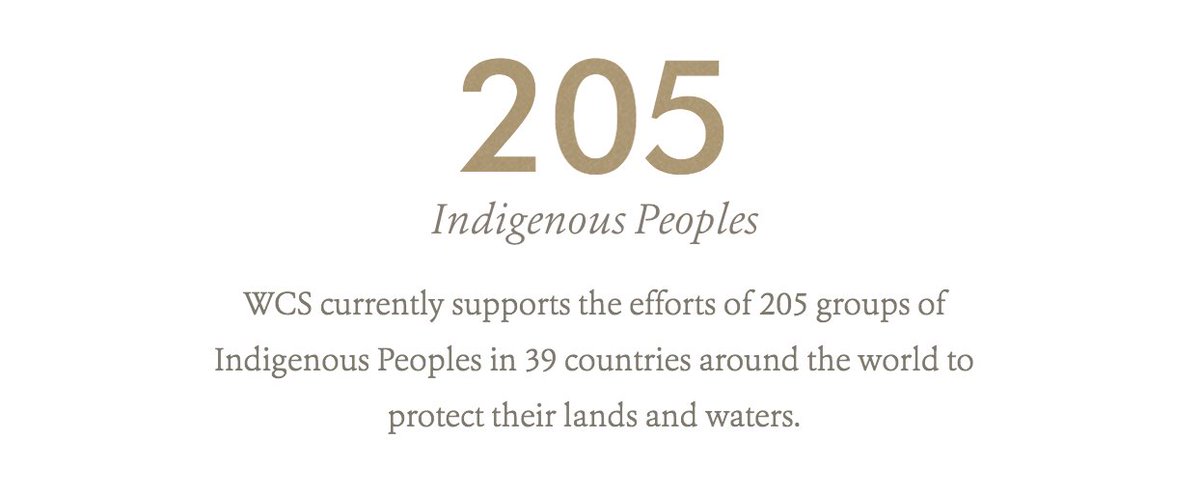This #IndigenousPeoplesDay, densely populated urban areas have garnered most of the media attention and public health response. What has been largely ignored is the impact of #COVID19 on Indigenous Peoples, writes WCS's David Wilkie.
1/8
medium.com/communities-fo…
1/8
medium.com/communities-fo…
First, Indigenous Peoples are at high risk of dying from the disease should they get it. This is because Indigenous Peoples tend to be:
👉geographically isolated
👉politically marginalized
👉economically insecure
👉neglected by national public health services
2/8
👉geographically isolated
👉politically marginalized
👉economically insecure
👉neglected by national public health services
2/8
They are particularly vulnerable because most communities have wholly inadequate access to PPE and lack Western medicines and facilities. #IndigenousPeoplesDay
3/8
3/8
There is a 2nd threat.
With world focused on pandemic and shattered economies, a growing risk governments & private sector attempt to abrogate rights of Indigenous Peoples to log their forests, mine their lands, and fish their waters.
4/8
With world focused on pandemic and shattered economies, a growing risk governments & private sector attempt to abrogate rights of Indigenous Peoples to log their forests, mine their lands, and fish their waters.
4/8
We asked some partners in Bolivia about this danger:
Any response to the pandemic must respect the vision and rights of Indigenous Peoples, says Gonzalo Oliver Terrazas, president of La Paz Indigenous People´s Organization in Bolivia. 5/8
Any response to the pandemic must respect the vision and rights of Indigenous Peoples, says Gonzalo Oliver Terrazas, president of La Paz Indigenous People´s Organization in Bolivia. 5/8
From Angel Duran Laura of Lecos Apolo Indigenous People 6/8
Also #IndigenousPeople have knowledge that must be shared and valued as we look to rebuild the relationship between humanity and nature in the months ahead, says Ricardo Clavijo Lipa, Capitan Grande of Lecos Apolo Indigenous People. 7/8
.@TheWCS and other NGOs can and do play vital role.
WCS currently supports the efforts of 205 groups of Indigenous Peoples in 39 countries around the world to protect their lands and waters. We must redouble our efforts in the months ahead. #IndigenousPeoplesDay 8/8
WCS currently supports the efforts of 205 groups of Indigenous Peoples in 39 countries around the world to protect their lands and waters. We must redouble our efforts in the months ahead. #IndigenousPeoplesDay 8/8

• • •
Missing some Tweet in this thread? You can try to
force a refresh
















